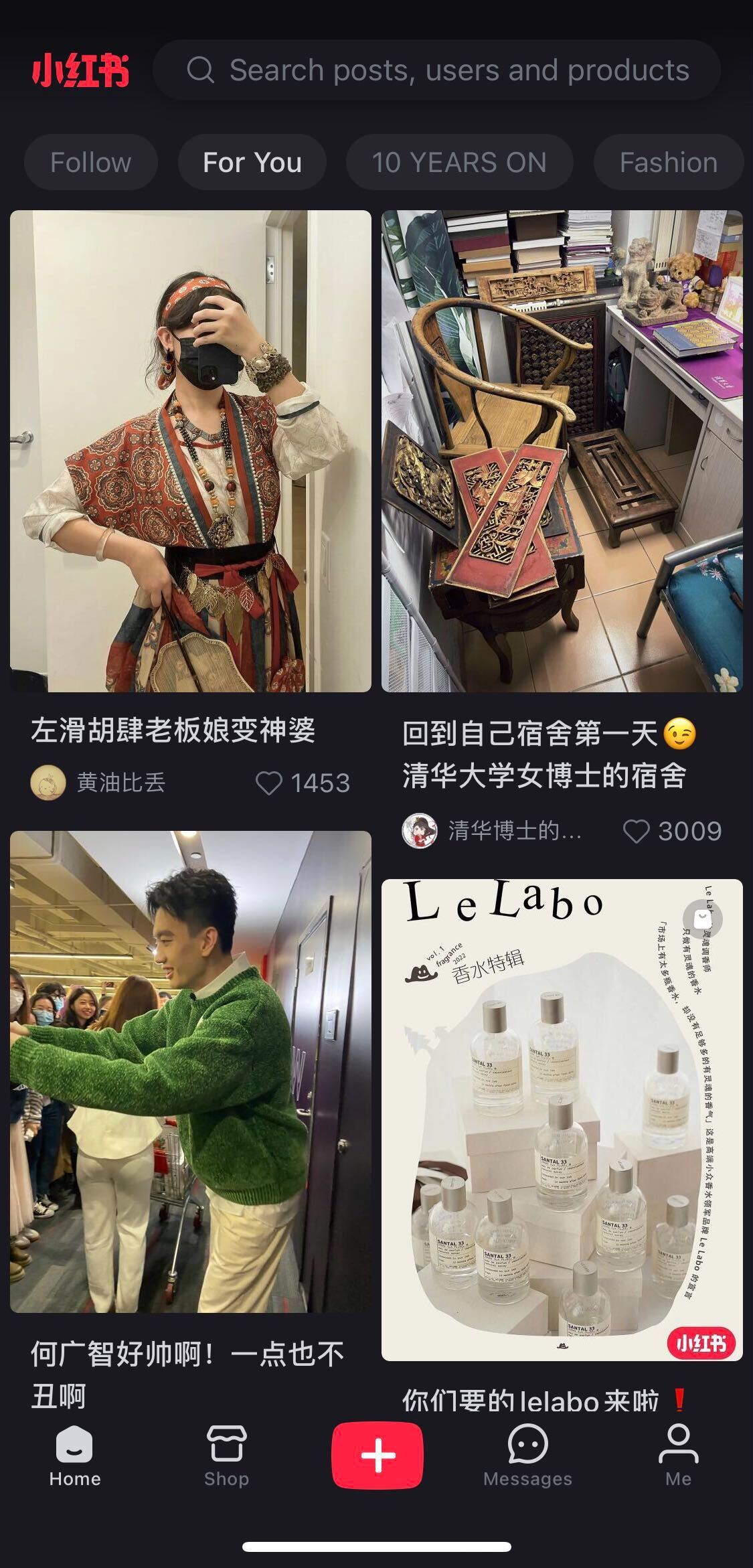If you didn’t already know….
…Facebook, Twitter, and YouTube are all blocked in China, and they’re just a few of the many that don’t make it past the Great Firewall of China.
In fact, almost every major Western social media platform is inaccessible within China, and it has been this way for quite some time.
But, China has its own digital ecosystem.
 In the place of the YouTubes and Facebooks, there is a range of other options. Some of these may be familiar to you, and some may not.
In the place of the YouTubes and Facebooks, there is a range of other options. Some of these may be familiar to you, and some may not.
I have experience with these platforms as a user and a marketer. Therefore, in this post, I’m going to introduce the six key social media platforms in China: their main features and functions, their western counterparts (or nearest equivalent), and how they work.
Let’s dig in.
WeChat (微信)

With over 1.2 billion monthly active users, WeChat is the undisputed king of Chinese social media.
It began as a chat app, not too dissimilar to WhatsApp, but it evolved into something much bigger than just a communication tool.
Almost everyone in China has it, except for some of the older generation living in rural areas. However, if you’re in China, then WeChat will be your main form of communication with everyone.
Here are the key features:
Chat — The name should have given it away already. WeChat offers one-on-one and group chats, and there are no read receipts, which means the sender doesn’t know if the recipient has read the message (great if you want to politely ignore someone).
You can also send audio messages (voice notes) or make video and audio calls.
Official Account Posts — WeChat’s Official Accounts are brand or business accounts and post or publish information directly in the message feed or the subscriptions folder.

 Moments — This separate newsfeed allows users to share content with, and view content (videos, photos, text) from their friends. The feed is organized newest-to-oldest, with the most recent post featured at the top.
Moments — This separate newsfeed allows users to share content with, and view content (videos, photos, text) from their friends. The feed is organized newest-to-oldest, with the most recent post featured at the top.
 However, a lot of promotions and advertisements (from companies or brands) can appear in the feed and make it feel a bit like a SPAM folder.
However, a lot of promotions and advertisements (from companies or brands) can appear in the feed and make it feel a bit like a SPAM folder.
WeChat Pay — WeChat also has a feature that lets you hold money within the app and use it to pay for (almost) everything. Even the elderly vendors selling snacks on street corners accept WeChat payments.
Just out of curiosity, I polled seventeen colleagues on their daily WeChat usage.
 In terms of the features they use daily:
In terms of the features they use daily:
1- Chat
2- WeChat Pay
3- Moments
Only half of the respondents use WeChat Official Accounts daily; however, everyone uses it at least weekly.
Now, there’s a lot more to WeChat outside of the main features I’ve just mentioned.
Mini-Programs — Signing up for and downloading mini-programs gives users access to more features. Within the WeChat app, users can pay their utility bills, order food, shop, purchase items at their favorite store, call a taxi, etc.

Weibo (微博)

The second one on our list’s closest Western cousin would be Twitter, and while it’s kind of like Twitter in some ways, it’s been designed to suit China’s users.
Weibo has approximately 500 million monthly active users who use it to keep up-to-date with current events and trends, and follow individuals and brands.
The platform supports text, video, and image content, and most posts will contain a text description and a visual element (either an image or a video clip).
A Weibo main feed looks like this:
 Weibo’s main feed prioritizes fresh content and will also push content it thinks you might enjoy or find interesting. Alongside all of this, expect to see some advertisements in there too.
Weibo’s main feed prioritizes fresh content and will also push content it thinks you might enjoy or find interesting. Alongside all of this, expect to see some advertisements in there too.
Anybody can post content on Weibo, and there are no limits on the number of posts they can make each day.
Personally, I’m a big fan of the “image album feature” that allows users to upload up to 18 images in a single post (but only nine will show up in the feed).
 Are you a blogger, journalist, essayist, or just like your content in long-form writing? Weibo lets you post whole articles…well, just the first 140 characters will appear in the feed.
Are you a blogger, journalist, essayist, or just like your content in long-form writing? Weibo lets you post whole articles…well, just the first 140 characters will appear in the feed.
 If a reader likes what you have to say in your introduction, they can click on “read more” to access the full article.
If a reader likes what you have to say in your introduction, they can click on “read more” to access the full article.
Weibo has a “trend’s area” for knowing what’s currently hot. The following topics tend to rank highly in this area:
- News
- Celebrity gossip
- Lifestyle
- Random viral content
In the image below, the number one trending topic for that day was “A girl donated 10 yuan and received repayment and thanks 4 months later.”

Is Weibo a good place to get your news and learn what’s happening globally?
It can be for many topics, but remember that the government monitors and controls the content. For this reason, I (as a bilingual speaker of Mandarin and English) still prefer to get my news from Twitter, where there’s less chance of it being censored.
Weibo’s a place where content can go viral.
Zhihu (知乎)

Zhihu is China’s number one Q&A platform and has over 100 million monthly active users asking and answering questions.
Like Weibo, it’s also a good place to keep up with what’s happening around the world.
News doesn’t travel as fast on Zhihu as it does on Weibo, so if you want to keep your finger on the pulse of what’s happening right now, then Weibo’s your platform.
However, the answers you’ll find on Zhihu are usually more in-depth.
What Zhihu may lack in timing, it makes up for in detail.
Answers with more “upvotes” from users appear higher in Zhihu’s feed. These are similar to “likes,” and users upvote posts based on how relevant and useful they find the answer.
 The answer in the image above has 436 upvotes, 51 likes, 114 favorites, and 83 comments (as of October 21st). As you can see, most of the answers are text only (no supporting images or videos).
The answer in the image above has 436 upvotes, 51 likes, 114 favorites, and 83 comments (as of October 21st). As you can see, most of the answers are text only (no supporting images or videos).
Users may browse Zhihu like they browse the newsfeed on another social media platform, but they’re usually searching for the answer to a specific question or problem.
Bilibili (哔哩哔哩)

If Bilibili has a Western equivalent, then it would be YouTube.
Of all the video platforms in China, Bilibili is by far my personal favorite (as I’m a big fan of YouTube).
Bilibili now has over 250 million monthly active users and began as a platform for anime, gaming, and comics (ACG) culture, but now covers other areas.
One of the most interesting features is the “bullet comments,” which are user-added comments that scroll across the screen as the video plays.
 You can also watch full-length films and productions, which is quite common on video platforms in China. There’s no real difference between a streaming platform, such as Netflix, and a video platform like Bilibili and YouTube.
You can also watch full-length films and productions, which is quite common on video platforms in China. There’s no real difference between a streaming platform, such as Netflix, and a video platform like Bilibili and YouTube.
Live-streaming is popular on Bilibili. Guests and hosts will join livestreams to do an array of activities, such as gaming or studying, or discuss topics like travel and food.

The gaming livestream above is covered with bullet comments. Young users absolutely love this feature, but if you don’t, you can always disable them.
Douyin (抖音)

Short-video platforms Douyin and TikTok are part of the same company, and they’re very similar in a lot of ways. Douyin, however, caters more to Chinese users, whereas TikTok targets a Western audience.
I’ve given it a try, so I know what it’s all about, but it’s definitely more of a young person’s thing. Douyin currently boasts over 600 million daily active users, which is incredible growth given that the short-video medium is a relatively new phenomenon.
Douyin is a great place to go after you’ve exhausted your cognitive abilities and attention span for the day and don’t want anything too mentally taxing to read or watch.
Don’t like the video you’re currently watching? No worries. Users can move on to the next video with a simple swipe.
Because of the easy transition between videos, successful and popular videos need to grab the users’ attention within the first few seconds.
Douyin also has a live-streaming option. These are usually product-focused and feature people advertising and selling things.
Travel is also a very popular topic. The pandemic and lockdown saw a rise in the popularity of “armchair traveling,” where a stay-at-home audience watches users live streaming their travel to new places.

Xiaohongshu (小红书)
The final entry in this list is quite unique.
Xiaohongshu is a place for all things to do with lifestyle.
This means it’s a place where people can share their own lifestyle: the cool things they do, the places they travel, the products they use, the restaurants they eat in, etc., and see what other users are doing.
 An interesting fact: Over 90% of Xiaohongshu’s 200 million users are female.
An interesting fact: Over 90% of Xiaohongshu’s 200 million users are female.
The content is highly visible, which means the posts contain multiple images or videos, but they are usually accompanied by a text review (which can be quite long).
It’s also very easy to buy products directly on Xiaohongshu, and brands will even offer free products to users writing reviews on the platform.

And there you have it—a brief overview of the six main Chinese social media platforms and their main features.
If you have any experience (good or bad) with any of the platforms I’ve just mentioned or have any questions, please leave a comment below.
For guides on these platforms, check China Digital Marketing 101.
